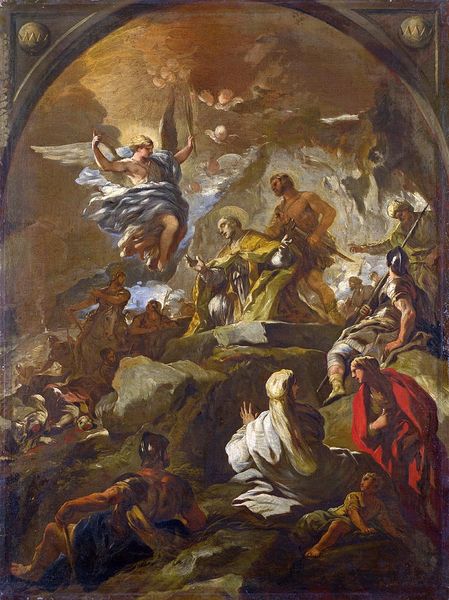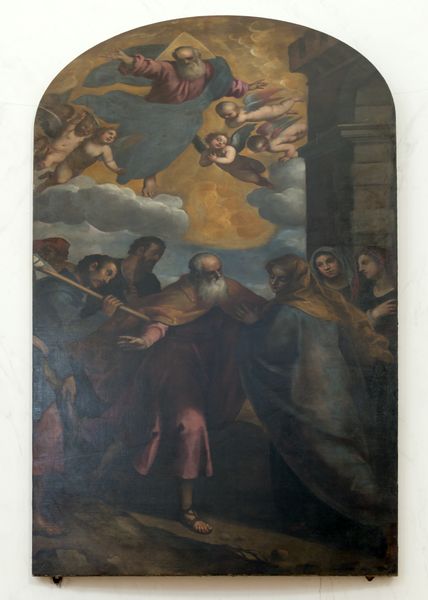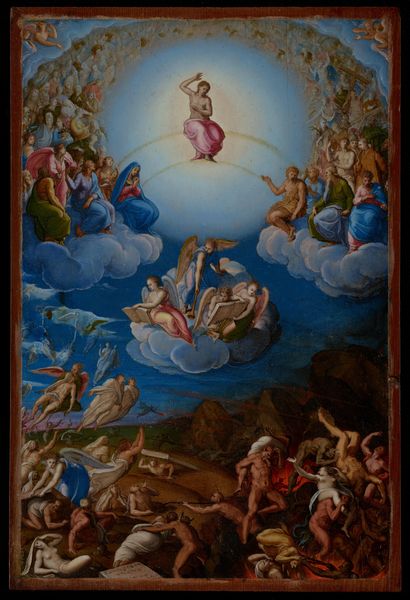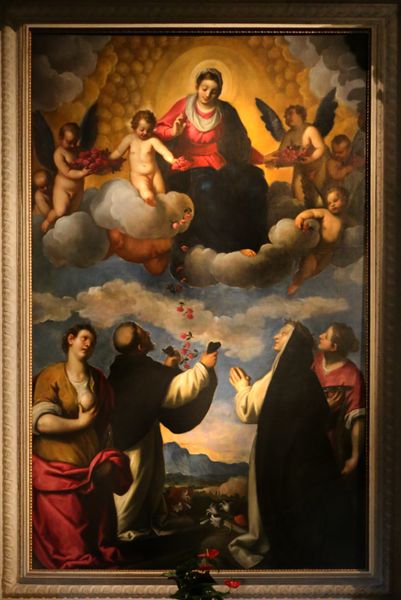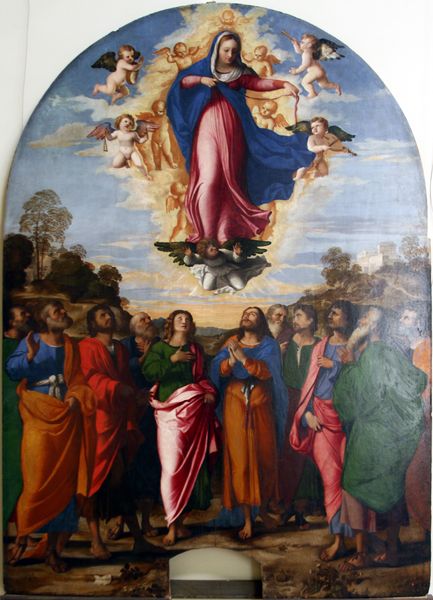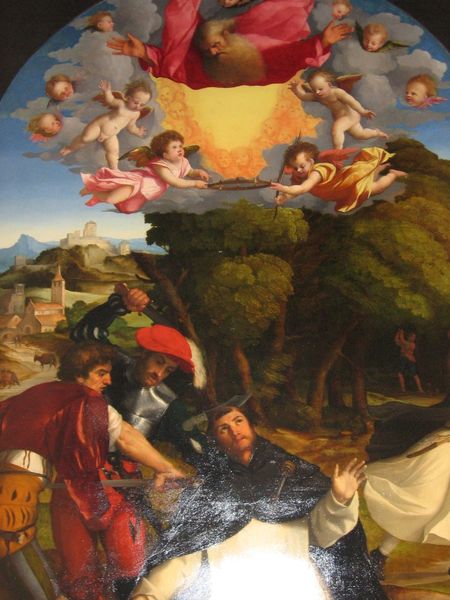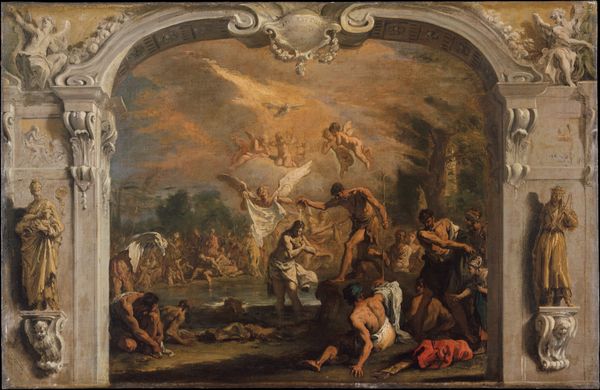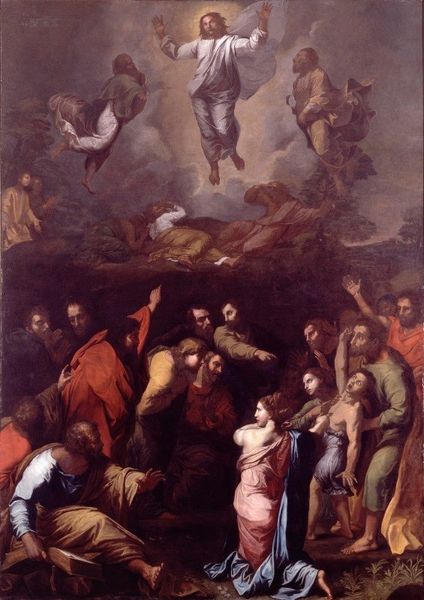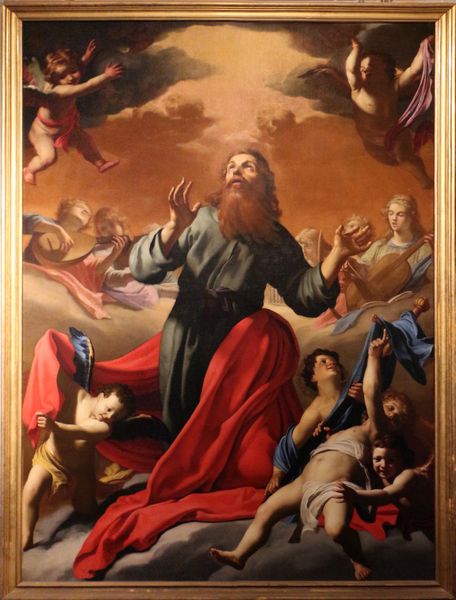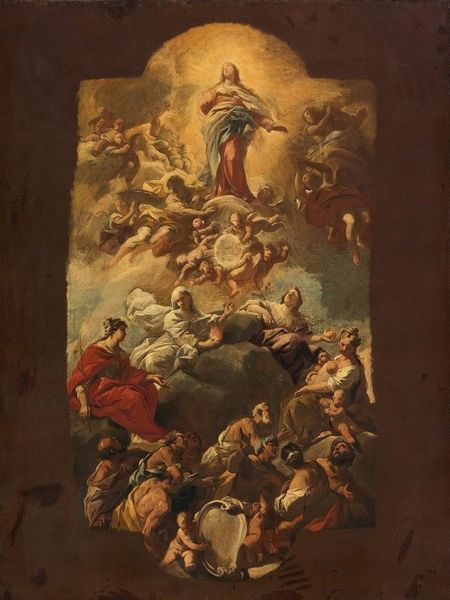
oil-paint
#
narrative-art
#
baroque
#
oil-paint
#
holy-places
#
figuration
#
oil painting
#
underpainting
#
chiaroscuro
#
christianity
#
history-painting
#
christ
Copyright: Public domain
This is the central panel of an altar triptych, painted by William Hogarth. Here, we can see the conventional materials and techniques of oil painting. The canvas support, prepared with gesso; the careful layering of pigments to create depth and luminosity. But Hogarth, though certainly capable as a technician, uses these materials in a deliberately unconventional way. This isn't the high polish we might expect from a grand manner painter of the 18th century. It's much rougher, and more immediate. Hogarth’s brushwork imbues the painting with an unmistakable social significance, in the context of British art. He set himself against the fashion for work by Continental masters. Instead, he aimed to found a robustly British school. His emphasis on directness, even bluntness, was a way of signaling that patriotic intent. He wanted to produce work that spoke to the everyday experience of the working population. So, next time you look at a painting, consider the labor and intention embedded in every brushstroke, and how these choices challenge or reinforce the established order of things.
Comments
No comments
Be the first to comment and join the conversation on the ultimate creative platform.

